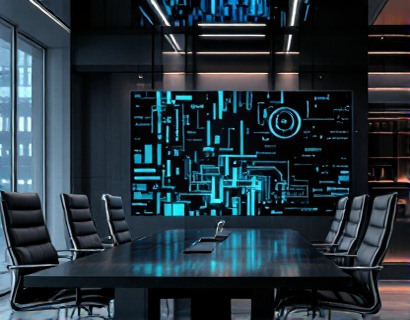Maximizing Architecture Firm Efficiency with Advanced Software Solutions
In the competitive landscape of architecture firms, efficiency and productivity are paramount. Advanced software solutions play a crucial role in streamlining internal processes and enhancing user experience, allowing architects to concentrate on their creative endeavors while optimizing project management, resource allocation, and client interactions. This article delves into the various ways technology can transform the operations of architecture firms, leading to improved overall performance and client satisfaction.
Streamlining Internal Processes
One of the primary benefits of implementing advanced software solutions in an architecture firm is the streamlining of internal processes. Traditional methods often involve manual tasks, paper-based workflows, and disjointed communication, which can lead to errors and inefficiencies. By adopting digital tools, firms can automate routine tasks such as document management, scheduling, and reporting. This automation not only saves time but also reduces the risk of human error, ensuring that projects stay on track and within budget.
Project management software, for instance, provides a centralized platform where all project-related information is stored and accessible to authorized team members. This includes project timelines, task assignments, file sharing, and progress tracking. Such tools enable real-time collaboration, allowing team members to work together seamlessly regardless of their physical location. This is particularly beneficial for firms with remote workers or multiple office locations, as it ensures everyone is on the same page and working towards the same goals.
Enhancing User Experience
Beyond internal processes, advanced software solutions also significantly enhance the user experience for clients and stakeholders. Client portals, for example, offer a user-friendly interface where clients can access project updates, view documents, and communicate with the design team. This level of transparency and accessibility fosters trust and satisfaction, as clients feel more involved in the project's progression.
Moreover, integrated communication tools within these platforms facilitate smoother interactions between architects, clients, and other stakeholders. Instant messaging, video conferencing, and file sharing features eliminate the need for back-and-forth emails and meetings, saving time and improving responsiveness. This enhanced communication not only streamlines the project workflow but also helps in building stronger client relationships.
Optimizing Resource Allocation
Efficient resource allocation is crucial for the success of any architecture firm. Advanced software solutions provide powerful tools for managing resources effectively. Resource management software allows firms to track the availability and utilization of resources such as personnel, equipment, and materials. This visibility helps in making informed decisions about resource allocation, ensuring that the right resources are available when needed and reducing idle time.
For instance, scheduling software can optimize the allocation of architects and engineers by considering their skills, availability, and workload. This ensures that projects are staffed with the most suitable team members, leading to higher productivity and better outcomes. Additionally, these tools can generate reports on resource usage, helping firm managers identify areas for improvement and make data-driven decisions.
Improving Collaboration and Productivity
Collaboration is a key factor in the success of architecture projects. Advanced software solutions foster a collaborative environment by providing tools that facilitate teamwork and idea sharing. Cloud-based design tools, for example, enable multiple team members to work on the same project simultaneously, regardless of their location. This real-time collaboration not only speeds up the design process but also encourages creativity and innovation, as team members can build on each other's ideas in real time.
Furthermore, these tools often include version control features, ensuring that all team members are working with the most up-to-date files. This reduces the risk of conflicts and errors caused by using outdated versions of documents. The ability to track changes and maintain a history of revisions also enhances accountability and transparency within the team.
Enhancing Client Interactions
Client interactions are a critical aspect of the architecture business. Advanced software solutions can significantly improve how firms engage with clients. Customer relationship management (CRM) software, for example, helps firms manage client data, track interactions, and follow up on leads. This comprehensive view of client relationships enables firms to provide more personalized service and better meet client needs.
Additionally, virtual reality (VR) and augmented reality (AR) technologies, when integrated with project management software, allow clients to visualize and interact with design concepts in a more immersive way. This not only enhances the client experience but also helps in gathering more accurate feedback, leading to better final designs. Clients feel more involved and confident in the decisions made during the design process, which can lead to higher satisfaction and repeat business.
Scalability and Flexibility
As architecture firms grow or take on more complex projects, the ability to scale and adapt is essential. Advanced software solutions are designed to be scalable, meaning they can grow with the firm without compromising performance. Whether a firm is expanding its team, taking on larger projects, or entering new markets, these tools can accommodate increased workloads and complexity.
Flexibility is another key advantage. Modern software solutions are often cloud-based, allowing firms to access their tools from anywhere with an internet connection. This flexibility supports remote work and global collaboration, which is increasingly important in today's interconnected world. Firms can easily adjust their workflows and resource allocation based on project requirements, ensuring optimal efficiency at all times.
Data Security and Compliance
With the increasing reliance on digital tools, data security and compliance become paramount concerns for architecture firms. Advanced software solutions prioritize security by implementing robust encryption, access controls, and regular security audits. This ensures that sensitive project data and client information are protected from unauthorized access and breaches.
Moreover, these solutions help firms comply with industry regulations and standards, such as GDPR and LEED. Compliance tools within the software can guide firms through the necessary steps to meet these requirements, reducing the risk of legal issues and enhancing the firm's reputation. By maintaining high standards of data security and compliance, firms can build trust with clients and stakeholders, further solidifying their market position.
Conclusion
In conclusion, advanced software solutions offer architecture firms a comprehensive approach to maximizing efficiency and enhancing user experience. By streamlining internal processes, optimizing resource allocation, improving collaboration, and enhancing client interactions, these tools enable firms to focus on their core strength—creative excellence. As the industry continues to evolve, embracing these technological advancements will be crucial for architecture firms looking to stay competitive and deliver exceptional results.










































